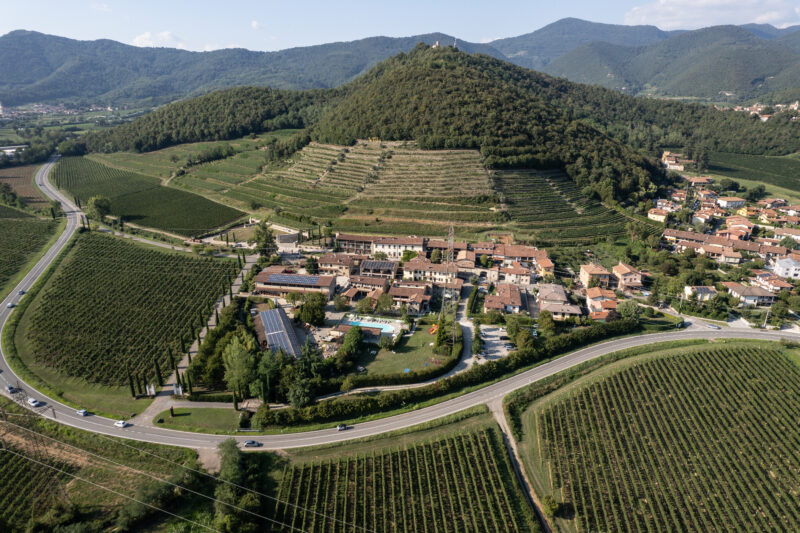
Villa Franciacorta aerial provided by the winery.
Amid the foothills of the Lombardian Alps of northern Italy lies Franciacorta DOCG, a region committed to producing elegant metodo classico sparkling wines. In the municipality of Monticelli Brusati, Villa Franciacorta is both a producer of Franciacorta DOCG wines and also a restored medieval hamlet called Villa, located a few kilometers from Lake Iseo.
Villa and the surrounding lake area was a popular country retreat for noble families from the cities as far back as the 15th century. However, like many small villages in Italy and Europe, Villa suffered economically after World War II. Villa’s future and fortunes changed in 1960 when 26-year-old Alessandro Bianchi, who grew up nearby in Provaglio d’Iseo, acquired land in the area. Bianchi made a commitment to restore and renew the region with a focus on the production of sparkling wines. The first bottled release was in 1978.
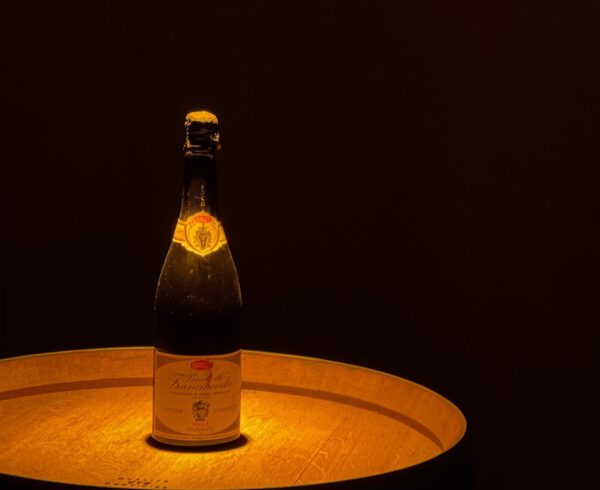
A bottle of the first vintage produced at Villa Franciacorta displayed in the underground cellars.
Today Villa Franciacorta is a thriving 100-hectare estate of which 46 are vineyards. Many are planted in terraces supported by stone walls on the slopes of the steep Madonna delle Rosa hill. Dug into the hillside is a 16th-century cellar that houses over one million bottles of Franciacorta DOCG.
Villa Franciacorta exclusively produces 100 percent estate grown vintage Franciacorta DOCG sparkling wines. The property also includes Villa Gradoni Charme & Nature, a restored 16th century farmhouse consisting of 22 apartments and a restaurant, Ela Osteria in Villa. This is a wonderful place to base yourself and explore the attractions around nearby Lake Iseo. Both Verona and Brescia are easy day trips. Information: www.villafranciacorta.it
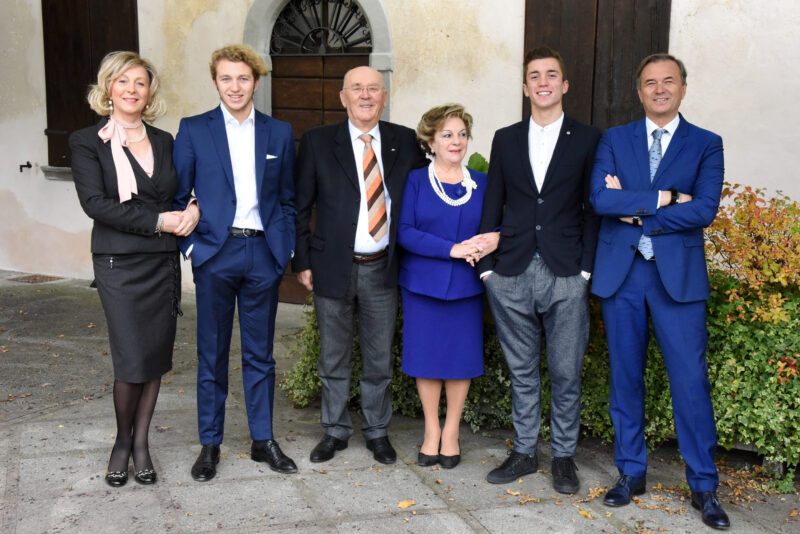
An earlier family photo: Roberta Bianchi, her son, Alessio Pizziol, Alessandro Bianchi and his wife Ivonne, Matteo Pizziol and Paolo Pizziol. After Alessandro passed away in 2020 at age 86, the family created a special cuvée in his memory which was released in 2024.
The son of a member of the Italian military police force, known as Carabinieri, Alessandro Bianchi believed in hard work and civic duty. He taught his daughter, Roberta, and her sons that the family’s responsibility was to be custodians of the land. This responsibility is taken seriously as we learned during our visit to Villa Franciacorta in April 2025. Roberta Bianchi, her husband Paolo Pizziol and one of her two sons, Matteo Pizziol warmly hosted us for a tour, tasting and overnight stay at Villa Gradoni Charme & Nature.
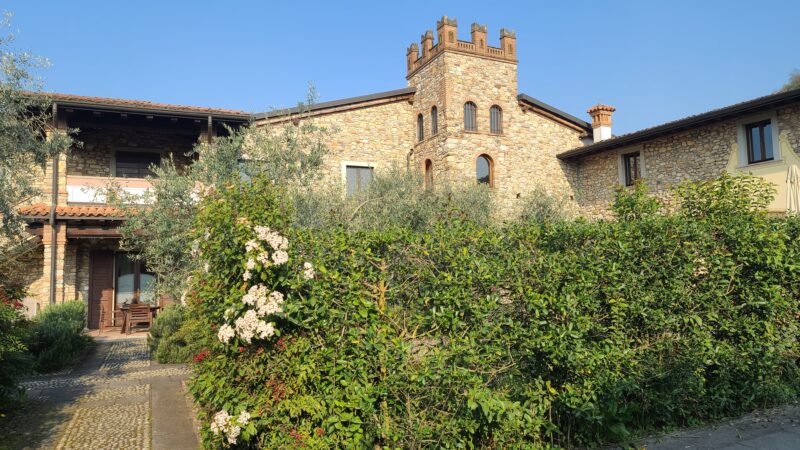
Villa Gradoni Charme & Nature is a restored 16th century farmhouse consisting of 22 apartments and a restaurant, Ela Osteria in Villa.
“Being custodians has had a real economic impact—but even more than that, it has created a legacy. A place that once risked disappearing is now a thriving, vibrant village—where nature, tradition, and innovation live side by side,” Roberta Bianchi told us.
“My father, Alessandro Bianchi, didn’t just choose this place. He felt chosen by it. While others saw an abandoned village, struggling land, and a risky investment, he saw potential. He fell in love with the natural beauty of the area and believed, deep down, that it could become something extraordinary. He didn’t see himself as an owner, but as a custodian of the land—someone with a responsibility to protect it, nurture it, and pass it on, better than he found it,”
And while the family has worked hard to restore and preserve history, they are also looking to the future.
“We’ve preserved the entire medieval village of Villa, which today looks almost exactly as it did in the 1500s. But we’ve also added our own chapter. In 2014, we began a research project with the University of Florence to study and select our own native yeasts—yeasts that come from our cellar and represent the living identity of Villa Franciacorta. That research led us to patent our own strains, which we now use in fermentation. It’s a way of deepening the connection between the place, the process, and the final wine,” Roberta said.
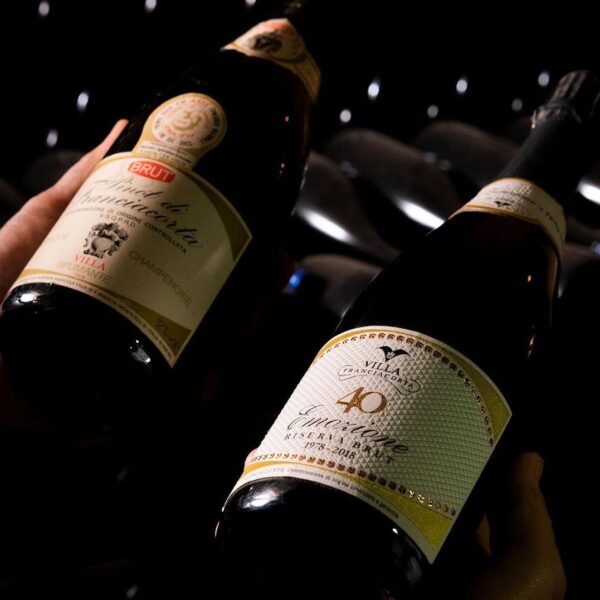
The wines of Villa Franciacorta
Alessandro Bianchi, was one of 29 producers who established the Franciacorta Consortium, established in 1990. “Their shared goal was to protect the identity of the region, raise the quality of the wines, and create clear, unified standards for production,” Roberta told us.
In 1967, Franciacorta was recognized with its first Denominazione di Origine Controllata, or DOC—a big step for Italian wine at the time. In 1995, Franciacorta became the first sparkling wine in Italy to receive the DOCG status—Denominazione di Origine Controllata e Garantita.
As noted, Villa Franciacorta produced 100% estate-grown single vintage “Millesimati” sparkling wines. We asked Matteo Pizzioli to differentiate the wines produced in Franciacrota
“Franciacorta DOCG must be made exclusively with grapes grown within the official region, and only from a few varieties: Chardonnay, Pinot Nero, Pinot Bianco, and Erbamat, a native grape recently reintroduced. All the grapes must be hand-harvested, and the wines must undergo secondary fermentation in the bottle—the classic method used in Champagne.
“But what really sets Franciacorta apart is the aging. Even the simplest style must age at least 18 months on the lees, the yeasts that give complexity and texture. For a Millesimato, which is made from a single vintage, it’s 30 months. And for a Riserva, it’s 60 months or more,” he told us.
A unique micro-climate
Villa Franciacorta’s proximity to Lake Isea helps moderate the weather. “We’re located in northern Italy, just south of Lake Iseo, which plays a huge role in moderating temperatures. The lake acts like a natural thermal regulator—it cools things down during hot summers and keeps the winters from getting too harsh. That means our grapes ripen slowly and steadily, maintaining the fresh acidity that’s so essential for making elegant, long-aging sparkling wines. We also benefit from good diurnal shifts—warm days and cool nights—which help preserve aromatic complexity and natural balance in the fruit,” said Roberta.
“Now, the geology is just as fascinating. While much of Franciacorta is shaped by glacial moraines, at Villa Franciacorta, our soils are marine in origin—formed over 150 million years ago, when this land was still under an ancient sea. The soil is a mix of sedimentary clays and cherty marl, full of minerals and marine fossils. You can actually find tiny shell fragments when digging in the vineyard! This marine influence gives our wines a distinct minerality and salinity, adding elegance and a deep sense of place. And because each parcel has its own soil composition, we vinify them separately, preserving the identity of each micro-terroir,” added Matteo.
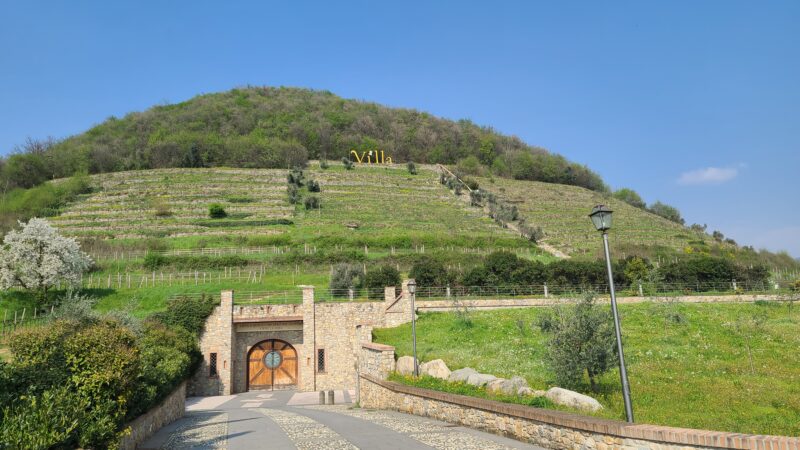
Entrance to the cellars at Villa Franciacorta below a hillside of terraced vineyards Photo: Melanie Young
Here are some of the Villa Franciacorta wines we tasted:
Satèn Brut Millesimato 2019 100% Chardonnay, vinified in stainless and aged a minimum of 36 months on lees.
Emozione 2019 85% Chardonnay, 10% Pinot Noir. 5% Pinot Bianco, aged 36 months on lees.
Extra Blu 2019 Extra Brut 90% Chardonnay, 10% Pinot Noir, 6 months partial aging in barrique and 54 months of aging on lees.
Diamant Pas Dosé 2016. 85% Chardonnay, 15% Pinot Noir, partial aging en barrique for 6 months, aged 66 months on lees.
Cuvette Brut 2019. A single cru and the only wine not made blended from different parcels. 85% Chardonnay, 15% Pinot Noir, partial aging en barrique for 6 months and 66 months aging on lees.
Franciacorta Rose 2020 Bokè Rose Brut Millesimato. Coral color is translation and is the color, 100% Pinot Noir. 36 months on lees, 1 year in bottle.
Franciacorta Pas Dosè Bokè Noir Rose 2019. Coral color. 100% Pinot Noir. 6 months on lees, 1 year in bottle
Riserva Nobile Alessandro Bianchi 2007 Special Cuvée, a tribute to Alessandro Bianchi, Released in 2024. Barrique 7-8 months. 15 years on lees. Floral nose. (white flowers), almond, soft, Light lemon, cream. 85 Chardonnay/15 PInot Noir. Beautiful bronze label and tribute box
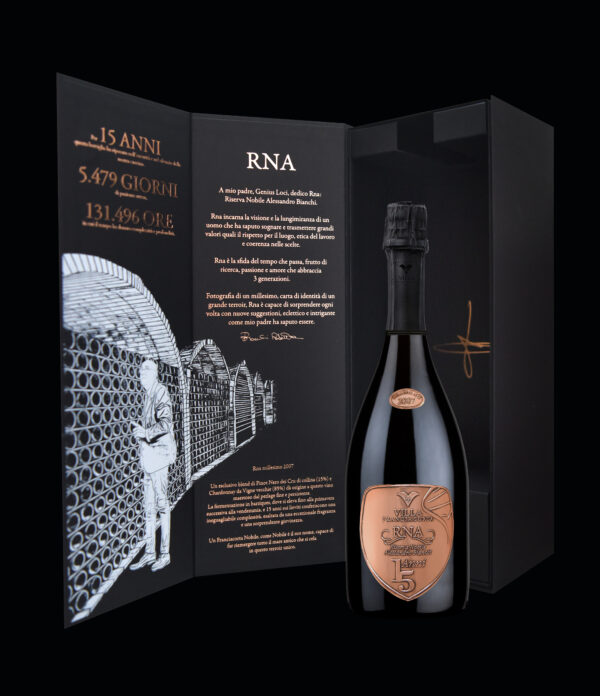
Both Roberta Bianchi and Matteo Pizziol sat down with us for an episode of The Connected Table. You can find the link here. The Connected Table Live – iHeart Radio
Or click here to listen:
